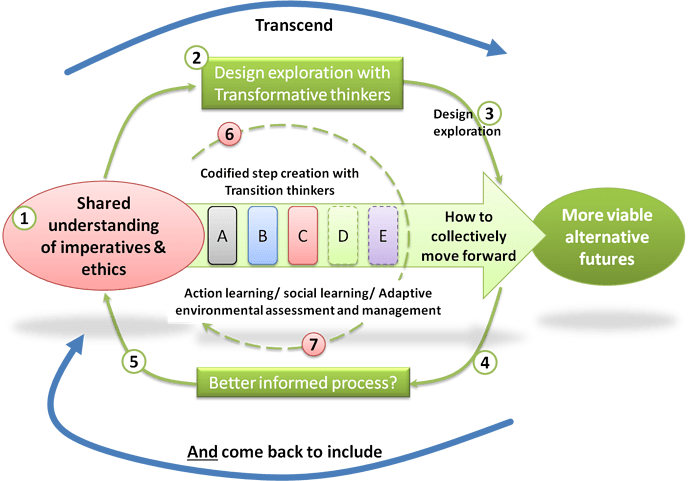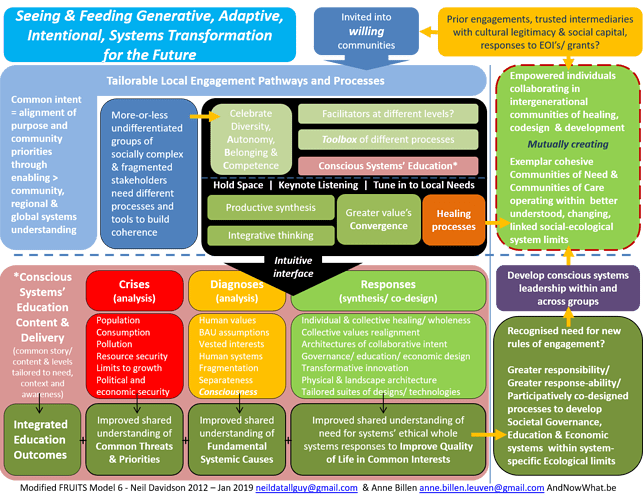Well, this is a tricky one… what is the purpose of the OGM, and the community formed around it?
What is it we could do together that we cannot do alone?
Context
We are in the early stages of the novel COVID-19 Pandemic AND in the midst of an accelerating sixth mass extinction event AND (in geological time terms) at the start of a period of unstable climate chaos which will challenge the survival of humanity – and that is before we even start to consider the fragmented worldviews, contested politics, overwhelm of (mis)information, inability to trust many institutions, lack of critical thinking, and multiple levels of education and consciousness with various degrees of conflict and competition amongst them as to “what ought we do?”
Consequently, in my opinion, and that of many I respect, the science shows we are heading, almost inevitably, toward global civilizational collapse, and possibly an ecological collapse so dire that life will need to start again from whatever is left when the climate has re-stabilized… we are talking milennia…
Can we head this off? Many think not…
In this fragmented landscape, where is any ‘systems leadership’ going to emerge from?
Systems Ethical Responses?
If there is a human-generated response worthy of exploring in the limited time we might still have the spare capacity to collaborate (rather than be fighting for survival) it will most likely be the result of harnessing/ steering emergent properties of complex adaptive reflexive human systems dynamics, wherever such coherence can be seeded. We have tools and approaches aplenty… and resources such as OGM and the people here.
Any project needs to build coherence before any concerted action with sufficient critical mass to shift momentum can eventuate. Given the enormity of the challenges of our predicament (in the sense described in Footnote 1) we (humanity) will need ways of collaborating in different realms of agreement and certainty, according to levels of comfort. The institutional inertia actively against this sort of transformational shift is huge – the Three Horizons Model is a useful one to view the ‘business-as-usual’ H1 paradigm in the context of the more entrepreneurial H2, and more transformational H3.
We are talking here about how to build coherence ‘horizontally, at level’ (coordination within a field/ virtual community/ place-based community etc) AND ‘vertically, across multiple levels’ (on-the-ground operational actions aligned within life-sustaining/ and regenerative whole systems ethics). Note, most current resources support the continuation of H1 – yet many of these practices are not life sustaining (look at the US Breakdown…  )
)
If we are to co-design and co-create real, living, regenerative communities we must go even higher than the Techno-utopian dreams of elegant suites of technologies cobbled together to create ‘more sustainable’ outcomes on a burning platform. Yes, we will need the deep expertise of the experts in many diverse fields, AND the transdisciplinary integration and cultural integrity required to bring these to the ground, elegantly, eloquently, in service of life, everywhere we can (not one size fits all).
I envisage Systems Design Laboratories (every island/ country town/ community could be one) where multiple whole system design alternatives are tested and monitored, improved with feedback, and refined as the context/ conditions/ climate etc change.
Facilitating Emergence?
Given we are starting with the fragmented mess caused and maintained by what I briefly outlined above, how will we build coherence, around what, and to what ends?
I believe we can ‘facilitate emergence’… not necessarily aim for any one particular outcome; in Buddhist terms, ‘non-attachment to outcome’ while aiming for the highest possible evolutionary step possible with whomever is assembled.
Without intending to point to the destructive qualities of ‘hierarchies’ it is worth pointing out that there are requisite functional hierarchies in every natural system. We (various sized and located cohorts of humanity) must find ways to guide the actions of all, for all, in order to – in indigenous Australian words – “Keep all alive.” While some may shy away from the thought of ‘rules’, we will need overarching/underpining ‘architectures of intent’ that enshrine the life-supporting ‘whole system ethics’ we all must follow IF we are to pass through this evolutionary bottleneck (a difficult ask, given how hard it is for some to even wear a mask…)
So, how do we envision the scope of this task of co-creating ‘whole systems ethics?’
While I personally lean toward ‘how do we each and collectively show-up more fully during collapse’ than believing we can find a way forward, I would like to explore these ‘big picture’ systems ethical topics here, and I have a few things to bring. I’ll wait for the response (if any) to this post before proceeding too much further (and it’s dinner time in Belgium  ).
).
Until then, here’s a starting diagram to get your heads around, based on one from Erich Jantsch.
I look forward to seeing you here.
Kind regards, Neil
Footnote 1: “ … the difference between problem and predicament. The distinction boils down to this: problems have solutions; predicaments have outcomes. A solution to a problem fixes it, returning all to its original condition. Once a suitable solution can be found and made to work, a problem can be solved. A predicament, by contrast, has no solution. Faced with a predicament, people can develop responses, but not solutions. Those responses may succeed, they may fail, or they may fall somewhere in between, but no response can erase a predicament. Predicaments have outcomes that can be managed, but circumstances cannot be returned to their original state.” The Crash Course: The Unsustainable Future of Our Economy, Energy, and Environment – Editor(s): Chris Martenson, First published:2 January 2012



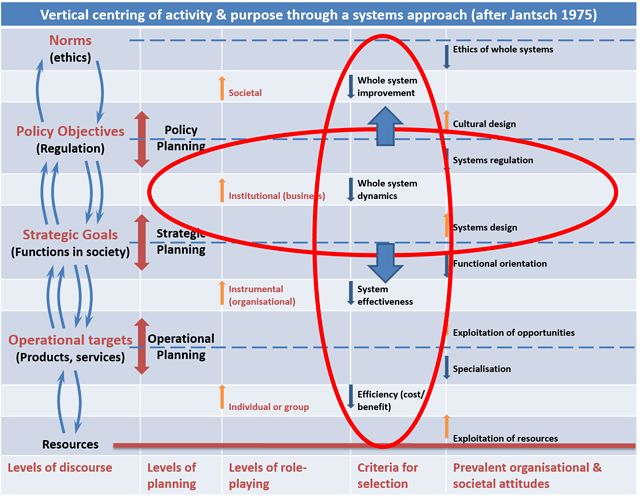
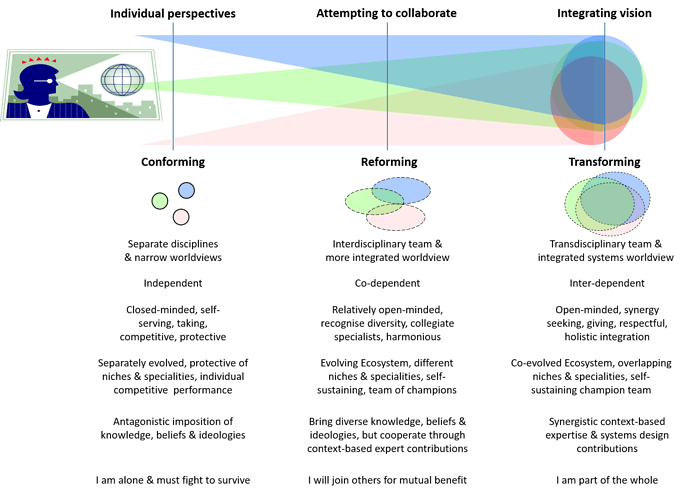

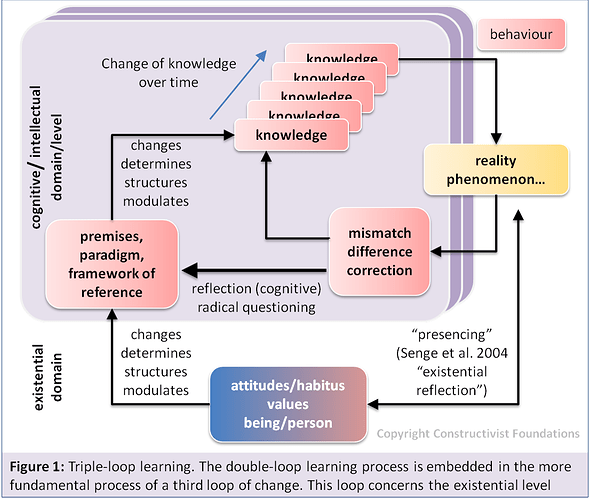
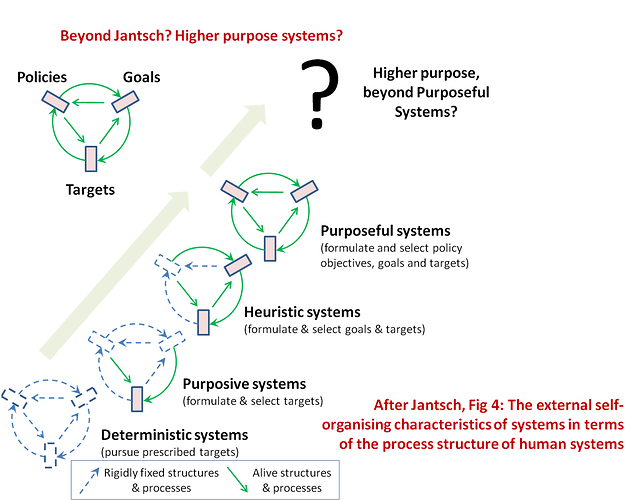
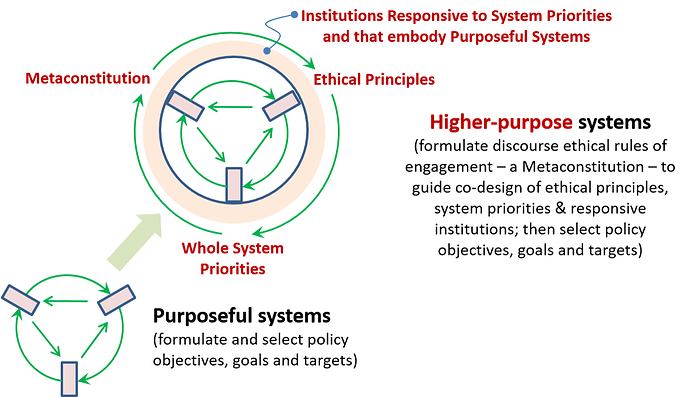
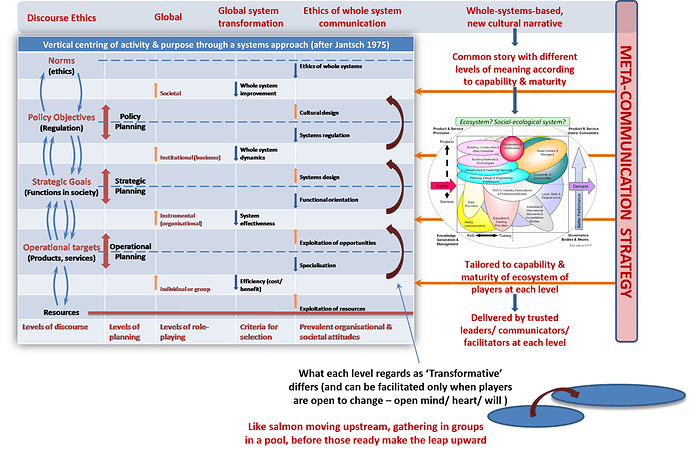
 to think and feel into the ethics of ‘what OUGHT we be doing?’ Given THESE skills, THESE tools, THESE people, in THESE times… if an individual is aware of the systemic issues in the world, do they feel individually compelled to act? If so, how? At what ‘level’ (no criticism - it’s just hard to discuss without recognizing the vertical difference in approach/es and potential leverage if higher system ethics are adopted).
to think and feel into the ethics of ‘what OUGHT we be doing?’ Given THESE skills, THESE tools, THESE people, in THESE times… if an individual is aware of the systemic issues in the world, do they feel individually compelled to act? If so, how? At what ‘level’ (no criticism - it’s just hard to discuss without recognizing the vertical difference in approach/es and potential leverage if higher system ethics are adopted).